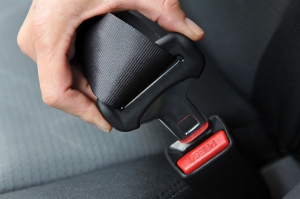 Tackling seat belt usage among commercial drivers is a long-term goal for the Federal Motor Carrier Safety Administration. Their plan of attack has included providing encouragement, issuing stern warnings, and enforcing mandates. While the numbers fall short of the 100% compliance goal, the data is encouraging. In 2007, a meager 65% of commercial drivers reported wearing their seat belt. In every survey since this number continued to increase. As of 2016, 86% of commercial drivers reported using their seat belt. This is inching closer and closer to the motoring public usage of 90%.
Tackling seat belt usage among commercial drivers is a long-term goal for the Federal Motor Carrier Safety Administration. Their plan of attack has included providing encouragement, issuing stern warnings, and enforcing mandates. While the numbers fall short of the 100% compliance goal, the data is encouraging. In 2007, a meager 65% of commercial drivers reported wearing their seat belt. In every survey since this number continued to increase. As of 2016, 86% of commercial drivers reported using their seat belt. This is inching closer and closer to the motoring public usage of 90%.
Understanding Survey Results
The survey delved deeper than simple seat belt usage. The following are the most important statistics gleaned from the survey:
- Seat belt compliance varies by region. The South, Midwest, and West average at 87% while the Northeast lags behind at 71%.
- States with primary seat belt laws have better compliance rates than those with secondary laws. Primary laws allow police officers to pull over drivers for not wearing a seat belt; secondary laws require officers to pull the driver over for a different citation in order to issue a seat belt violation.
- Despite increased usage, seat belt compliance remains one of the top driver violations.
- Male commercial drivers are more likely to wear their seat belt than female commercial drivers are (86% to 84%).
- Commercial drivers are more likely to wear their seat belt on high ways and heavy traffic areas than on surface streets and lighter traffic areas.
While many contribute the increased usage to heightened enforcement efforts, another static provides an alternate explanation. Fleet drivers are much more likely to wear their seat belts (86%) than independent drivers are (75%). This implies fleets have stepped up their safety efforts to protect their drivers and their business.
However, wanting to improve safety and achieving measurable results are two different things. DriverCheck can help fleets that are unsure of how to move forward with their safety efforts. Our How’s My Driving? Program can improve driver safety and reduce collisions by at least 10%. To learn more about how our program can improve your fleet’s safety, contact us today.